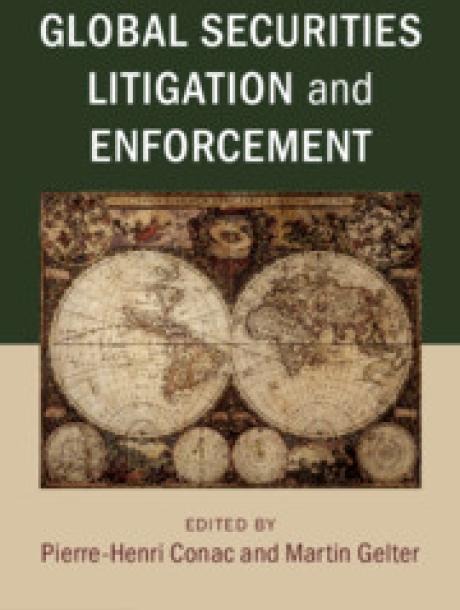
Global Securities Litigation and Enforcement
Global Securities Litigation and Enforcement provides a clear and exhaustive description of the national regime for the enforcement of securities legislation in cases of misrepresentation on financial markets. It covers 29 jurisdictions worldwide, some of them are important although their law is not well known. It will be an invaluable resource for academics and students of securities litigation, as well as for lawyers, policy-makers and regulators. The book also provides a comprehensive contribution debate on whether public or private enforcement is preferable in terms of development of securities markets. It will appeal to those interested in the legal origins theory and in comparative securities law, and shows that the classification of jurisdictions within legal families does not explain the differences in legal regimes. While US securities law often serves as a model for international convergence, some of its elements, such as securities class actions, have not been adopted worldwide.
Contributors
Pierre-Henri Conac, Martin Gelter, Franklin A. Gevurtz, Stéphane Rousseau, Viviane Muller Prado, Eugenio J. Cárdenas, Michael Pucher, Ville Pönkä, Dirk A. Verse, Emmanuel P. Mastromanolis, Guido Ferrarini, Paolo Giudici, Loes Lennarts, Joti Roest, Mariola Lemonnier, Paulo de Tarso Domingues, Gheorghe Buta, Mónica Fuentes Naharro, Iris H.-Y. Chiu, Yuliya Guseva, Mirko Vasiljević, Jelena Lepetić, Jasna Vasiljević, Uriel Procaccia, Ferna İpekel Kayalı, Piet Delport, Umakanth Varottil, Syed Imad-ud-Din Asad, Rana Touseef Sami, Robin Hui Huang, Eiji Takahashi, Tatsuya Sakamoto, Aiman Nariman Mohd-Sulaiman, Kyung-Hoon Chun, Wang-Ruu Tseng, Olivia Dixon, Jennifer G. Hill
Reviews
This book provides a unique view on the compensation of investors' losses in jurisdictions worldwide and is therefore of great interest to practitioners and supervisors.
Around the world the past two decades have witnessed significant strengthening of the legal protections afforded to investors in securities markets. The dynamic development of the field is reflected in this remarkable book, which provides a timely in-depth analysis of the enforcement of securities laws across 29 jurisdictions in all continents. Conac and Gelter have assembled leading country experts to give authoritative evaluations. This book enters a field where scholarship and practice work hand-in-hand enriching each other and helping to identify the legal strategies that can most effectively protect investors and is a fine addition to the canon.
This is a most interesting book for investors, issuers, regulators and academics. It informs on how securities regulation is enforced in 29 jurisdictions on all Continents and what works better, public or private enforcement or best a mix of them. It seems that today there is more convergence than path dependency, a fascinating story not to be missed.
Once again, Cambridge University Press (CUP) have excelled with their new title “Global Securities Litigation and Enforcement” edited by two professors: Pierre-Henri Conac and Martin Gelter. The book is rightly described as providing both a clear and an exhaustive description of the national regime for the enforcement of securities legislation in cases of misrepresentation on financial markets. The editors review 29 jurisdictions worldwide, all of which are important although the law in some jurisdictions is not well known. We consider that this book will be an invaluable resource for academics and students of securities litigation, as well as for lawyers, policymakers and regulators. The book also provides a comprehensive contribution debate on whether public or private enforcement is preferable in terms of development of securities markets. It will appeal to those interested in the legal origins theory and in comparative securities law. It shows that the classification of jurisdictions within legal families does not explain the differences in legal regimes. For instance, while US securities law often serves as a model for international convergence, some of its elements, such as securities class actions, have not been adopted worldwide. The editors are careful to cover the following points offering “a decisive and unique debate on whether public or private enforcement is better in terms of development of securities markets”. They also include a description of public and private enforcement of securities law for prospectus and secondary misrepresentation on securities markets from the selected 29 worldwide jurisdictions. In over 1100 pages which is split into 9 parts and 30 chapters, the editors have asked 37 contributors to provide insights into the recent and numerous developments of securities litigation. The result is a first-class contemporary statement in this highly specialised area of protection for investors, issuers, regulators and academics- you cannot be without it if this is your legal field! This book was first published as a hard back on 3rd January 2019.






